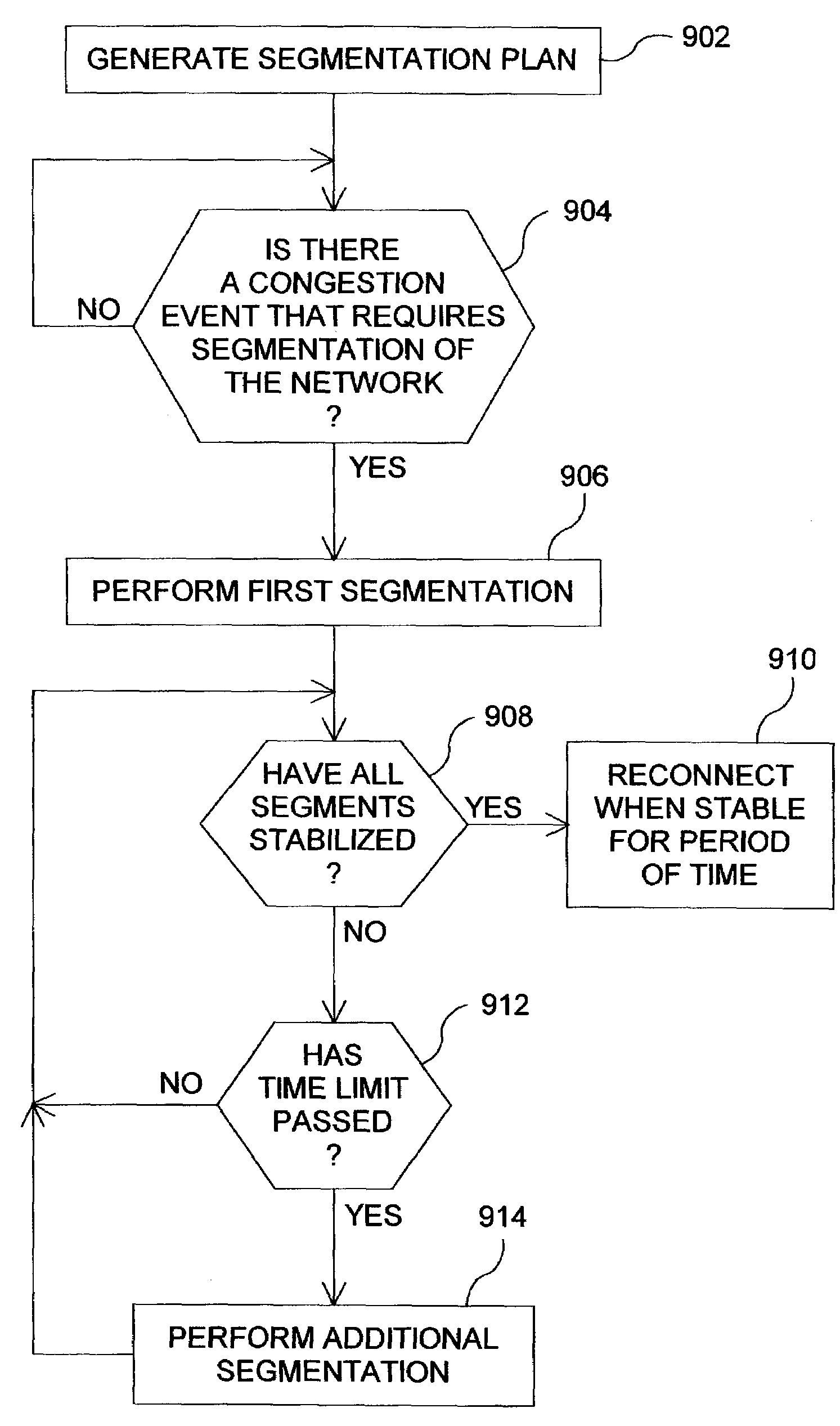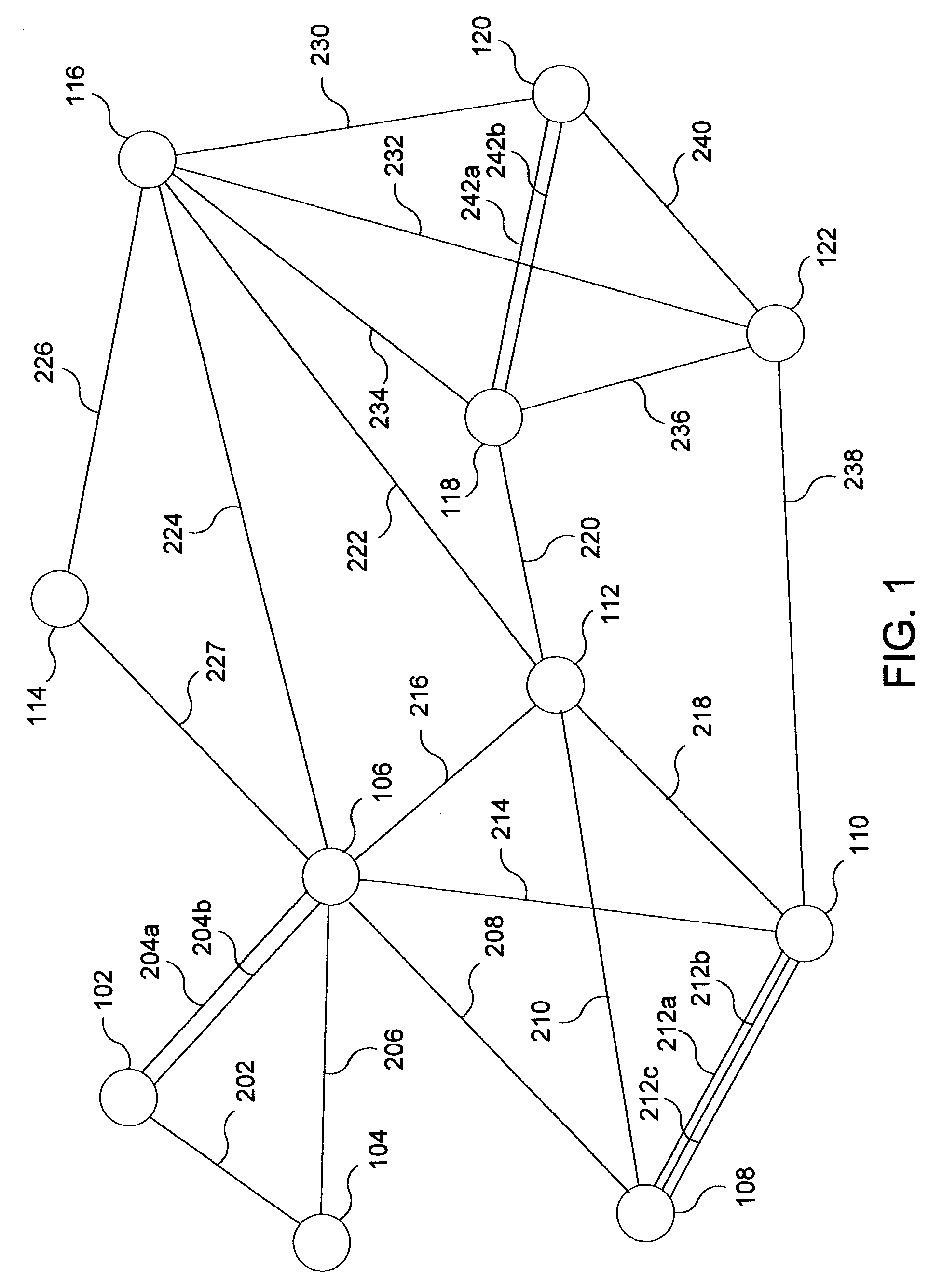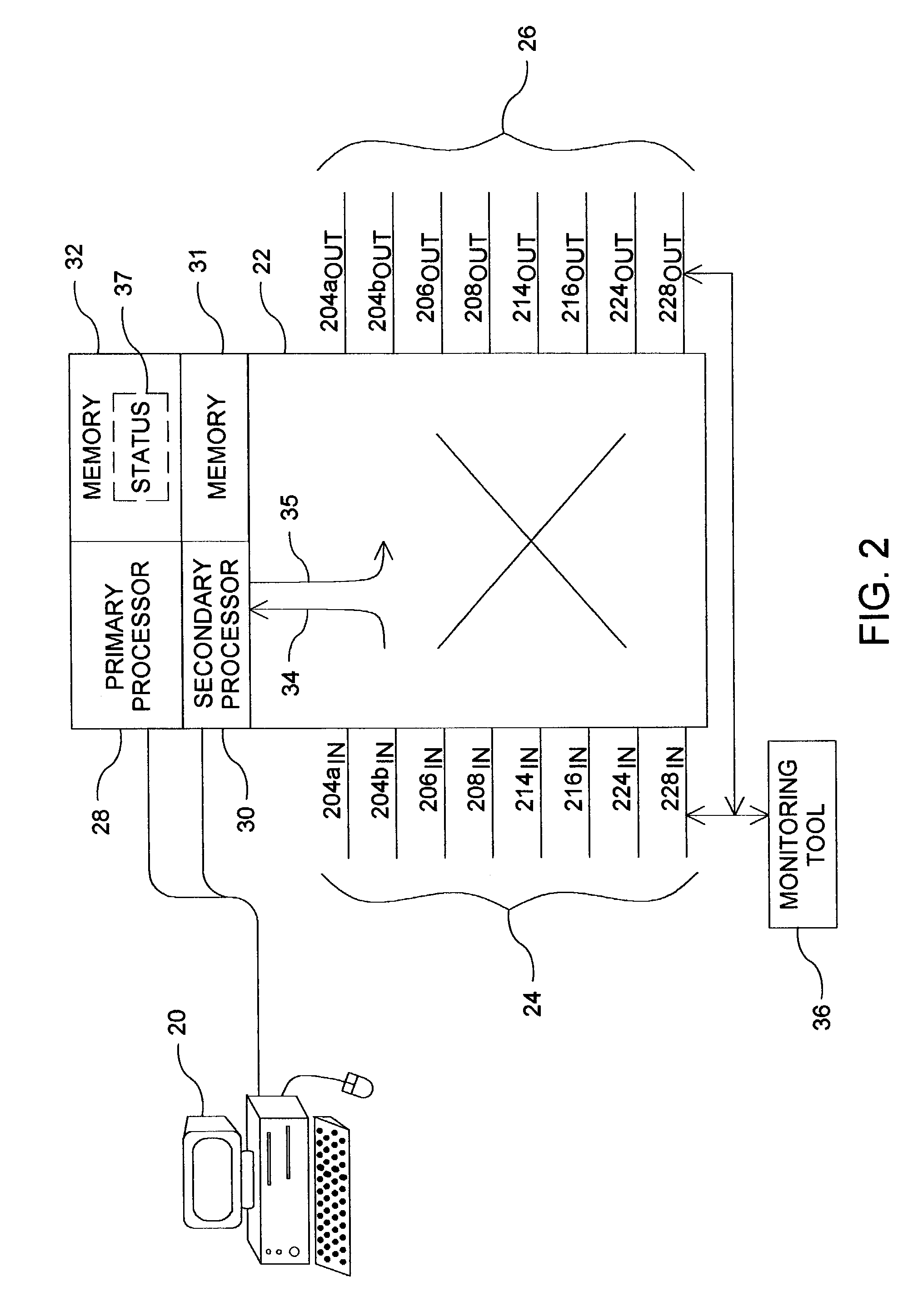Network segmentation method
a network segmentation and network technology, applied in the field of communication networks, can solve the problems of many trunks experiencing significant changes in reserved bandwidth, many duplicate messages, and the memory used to store messages may begin to exhaust, and achieve the effect of stabilizing more quickly
- Summary
- Abstract
- Description
- Claims
- Application Information
AI Technical Summary
Benefits of technology
Problems solved by technology
Method used
Image
Examples
Embodiment Construction
[0032]FIG. 1 shows a network area 100 in which the present invention may be implemented. The network area 100 may be one of several network peer groups or areas in a multi-layer network. For purposes of clarity of exposition, the network peer group or area 100 will be referred to generally herein as simply the network 100. The network 100 may suitably be an ATM network, IP network, or other network that employs link-state routing protocols such as PNNI or OSPF, among others. In the exemplary embodiment described herein, the network 100 is described as an ATM network that employs PNNI. However, it will be appreciated that the operations described herein apply to a broad range of networks using a broad range of link state routing protocols.
[0033]Referring specifically to FIG. 1, the network 100 includes a plurality of nodes 102, 104, 106, 108, 110, 112, 114, 116, 118, 120 and 122, which are interconnected by a number of links or trunks 202, 204a, 204b, 206, 208, 210, 212a, 212b, 212c,...
PUM
 Login to View More
Login to View More Abstract
Description
Claims
Application Information
 Login to View More
Login to View More - R&D
- Intellectual Property
- Life Sciences
- Materials
- Tech Scout
- Unparalleled Data Quality
- Higher Quality Content
- 60% Fewer Hallucinations
Browse by: Latest US Patents, China's latest patents, Technical Efficacy Thesaurus, Application Domain, Technology Topic, Popular Technical Reports.
© 2025 PatSnap. All rights reserved.Legal|Privacy policy|Modern Slavery Act Transparency Statement|Sitemap|About US| Contact US: help@patsnap.com



